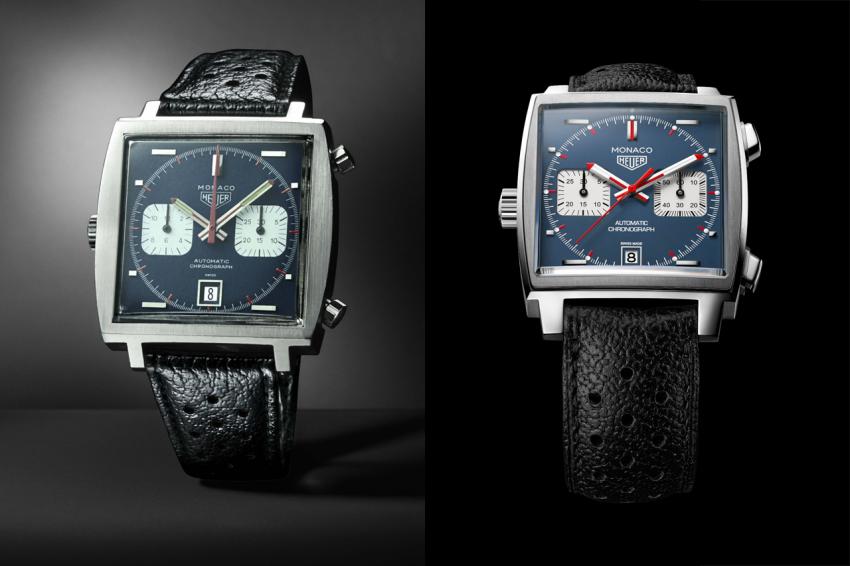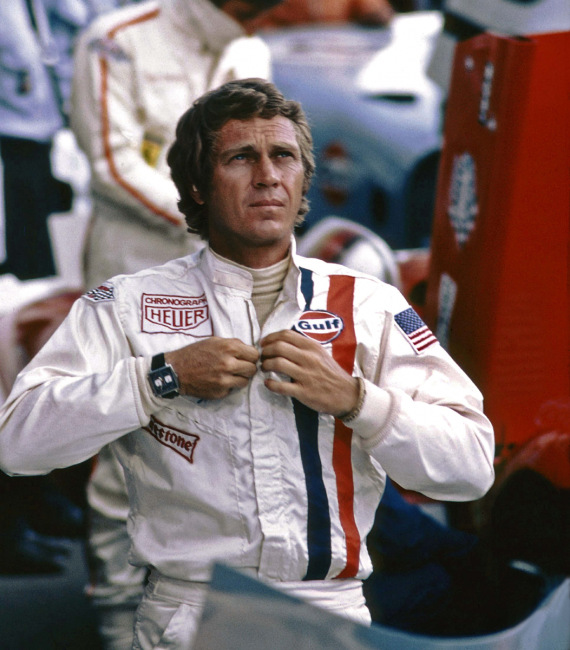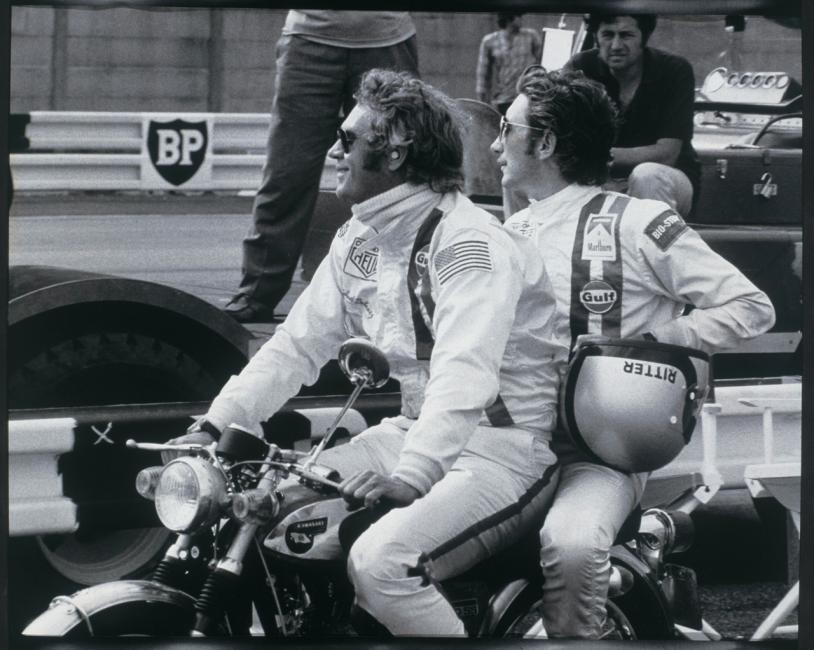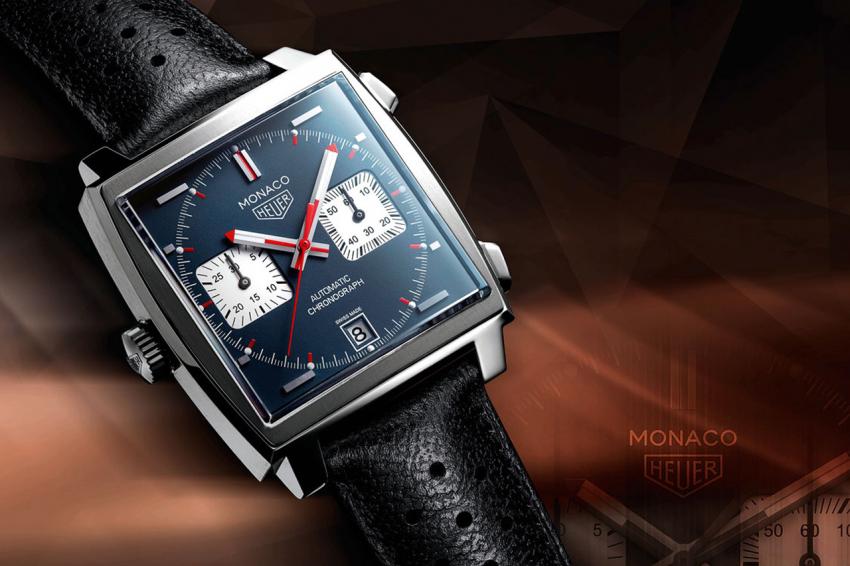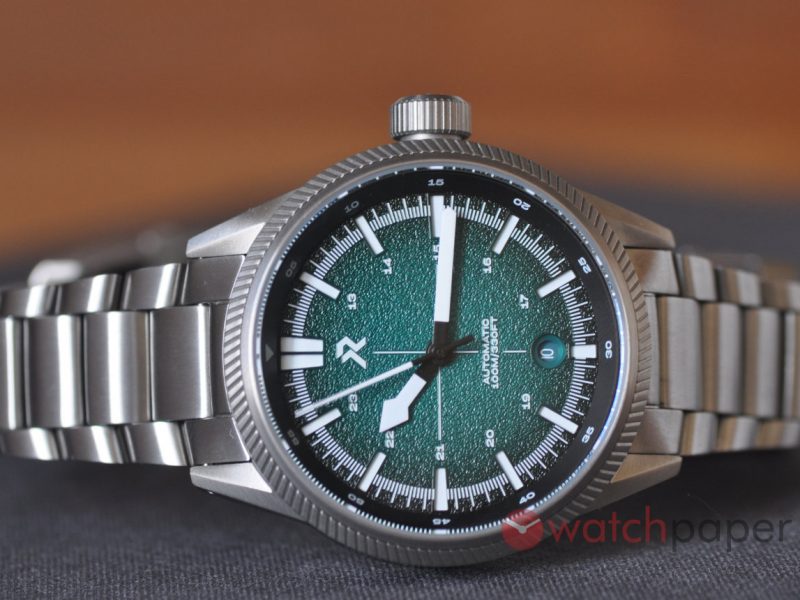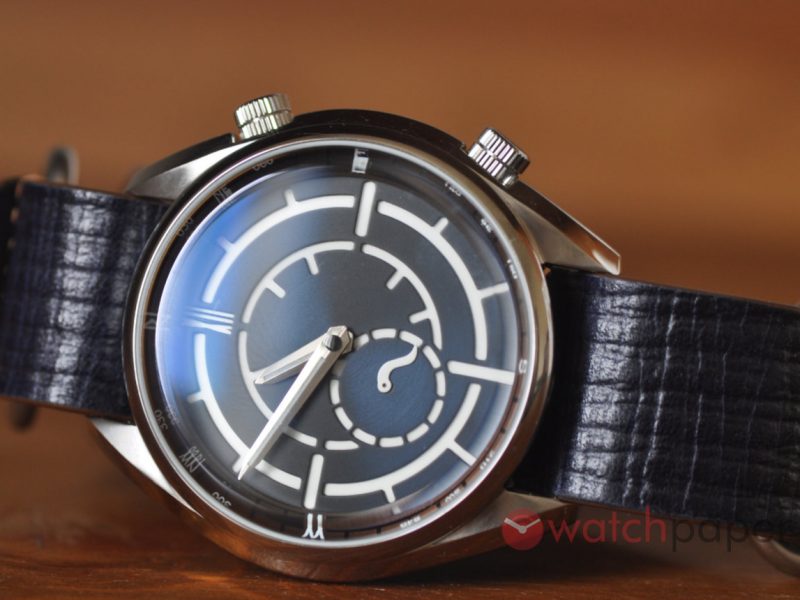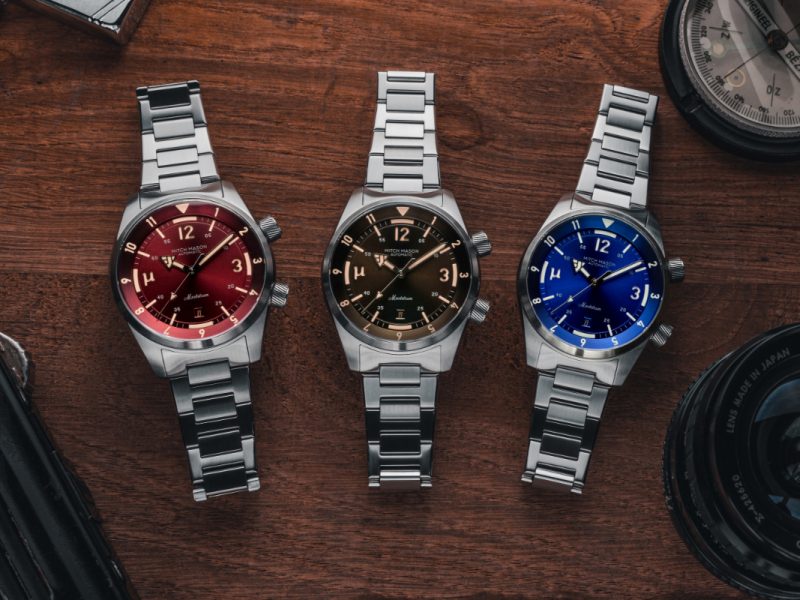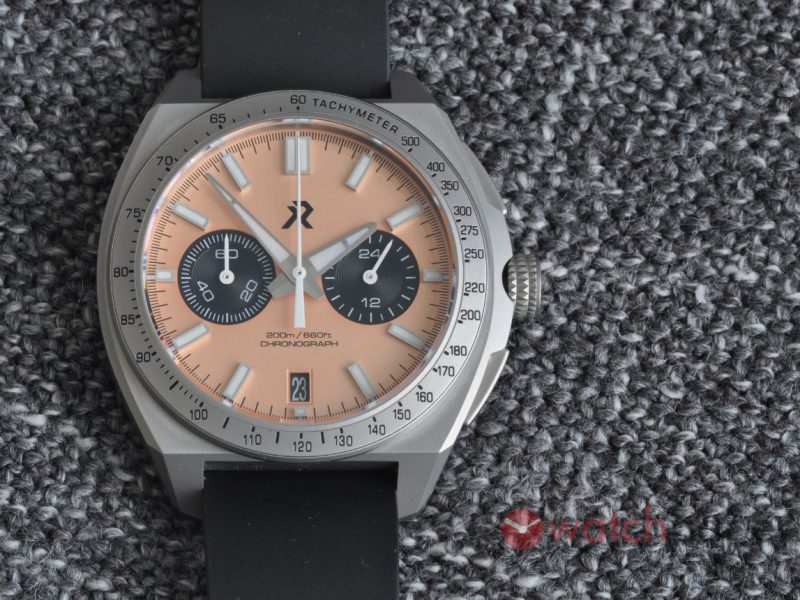TAG Heuer Monaco 1969 reissued
Whenever I hear Heuer, or TAG Heuer, in my mind there is a square shaped Monaco chronograph appearing, probably I’m not alone with this. Launched simultaneously in Geneva and New York on 3rd March 1969, the Heuer Monaco became an icon racing, worn by legends, a symbol of the ’70s. Named by Jack Heuer following the Monaco Grand Prix (for which TAG Heuer is still a partner), the watch represented a complete break from the aesthetic codes of traditional watchmaking, with its large square case, metallic blue dial, bright red minute hand, domed plastic crystal and, most notably, its crown positioned on the left which, to stress the idea that this watch did not need winding.
It was the first square watch to be water resistant and it was powered by the Chronomatic Calibre 11, the first automatic chronograph movement offered for sale.
It made its track debut in 1970, on the wrist of Swiss driver Jo Siffert, who was the first racing driver to be sponsored by a watch brand — Heuer. It was Siffert who introduced Steve McQueen to the Monaco in 1971 during the shooting of “La Mans”. Here is the story of the “McQueen Monaco” (1133B model) told by Jack Heuer himself, in his autobiography, The Times of my life:
As I was not present at the moment when Steve McQueen chose to wear a Heuer “Monaco”, I have to draw on hearsay from Don Nunley and Derek Bell, the British racing driver who also took part in the filming. The film company had hired two professional racing car drivers to coach McQueen to drive the unbelievably-fast Porsche 917. One was Derek Bell and the other was Jo Siffert, who was under contract with us. McQueen and Siffert got on like a house on fire, perhaps because they had both started their lives in humble circumstances and had gone on to become superstars in their respective professions. The day before shooting was due to start, one of the film’s production executives, Robert Rosen, went up to Steve McQueen and said: “Steve, tomorrow we start shooting for real. So far you’ve worn several types of racing overalls but now you’ve got to settle on how you want to look.” Apparently McQueen pointed towards Jo Siffert and said he wanted to look exactly like him. Siffert then ran to his caravan to fetch one of his white racing overalls which had the Heuer logo on the heart side and handed it to McQueen. Then Don Nunley went up to McQueen and said: “Now you have to chose a watch – here’s a nice Omega!” Apparently McQueen then handed the Omega back to Nunley, saying: “Not an Omega, they might use my name”, and instead he chose a Heuer “Monaco”, never having heard of us. Don Nunley says he had to offer the “Monaco” because it was the only watch of which he had three identical models. He needed three because one model would be used in the live racing shots, one would be used in the still photography and one was needed as a spare in case the others got damaged. Furthermore, if Jo Siffert’s racing overalls were emblazoned with a Heuer logo, film continuity demanded that the driver should also sport a Heuer chronograph on his wrist!
The 2015 Monaco Calibre 11 Chronograph is very close to the original model from 1969, with only a few slight updates. It keep the 39 mm size, the crown on the left, the legendary petroleum blue dial with two white counters, the date window at 6 o’clock, the diamond-polished horizontal hour indices, the inscribed vintage Heuer logo, the calibre 11 automatic chronograph with date and water-resistance to 100 metres.
What is changed, is the the three-part steel case (since 1998), which is slightly more square on the 2015 version, and closed with 4 screws; the shape of the two push-pieces at 2 and 4 o’clock, the lugs a little larger, its calfskin strap perforated, the sapphire crystal (since 2009) and an open case-back which reveals the gears of the calibre are all features of the updated version.
Technical details
Reference
CAW211P.FC6356
Case
Dimensions 39X39mm. Steel, in three parts, closed with 4 screws.
Movement
TAG Heuer Calibre 11
Automatic chronograph with Date Window at 6 o’clock
Dubois Dépraz chronograph module
40-hour power reserve
Dial
Metallic blue, chronograph minute counter at 9 o’clock and current Seconds counter at 3 o’clock
Rhodium-plated indices with red dot detail and white Super Luminova™
Water-resistance
100 metres
Strap
Perforated calfskin with steel deployant buckle.


